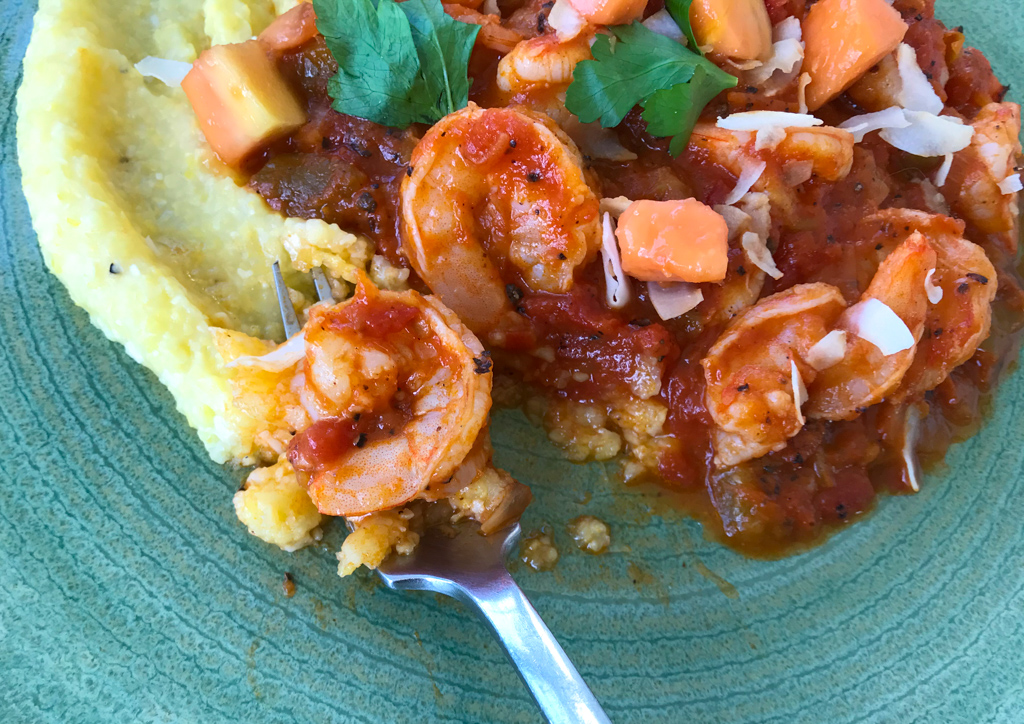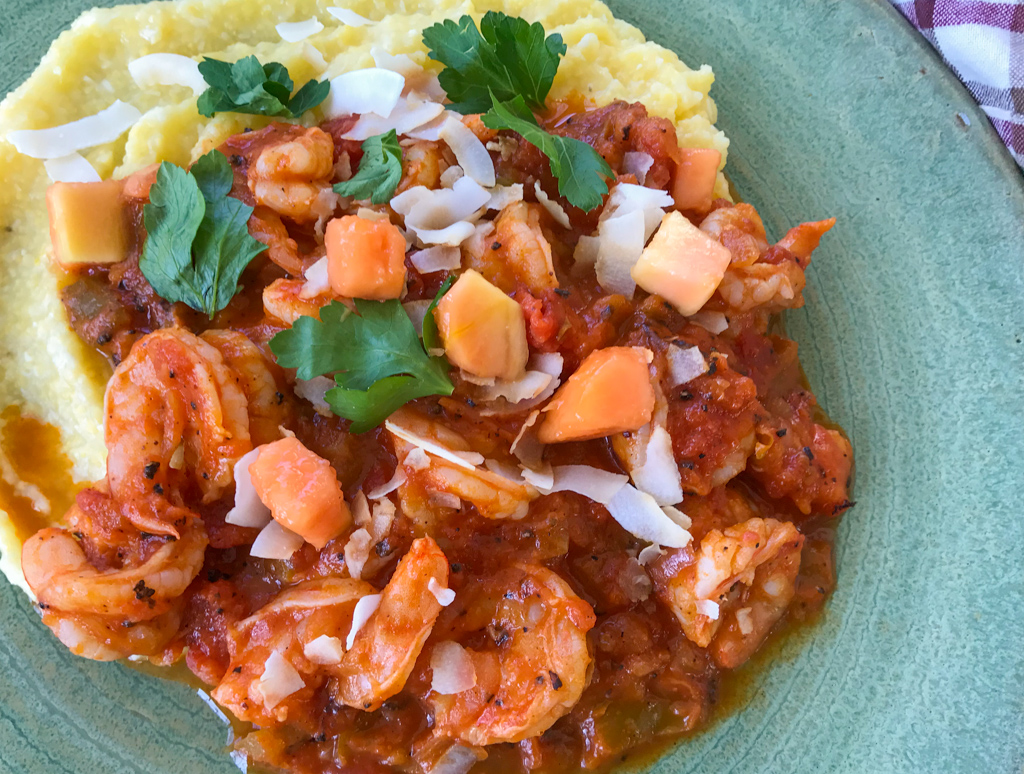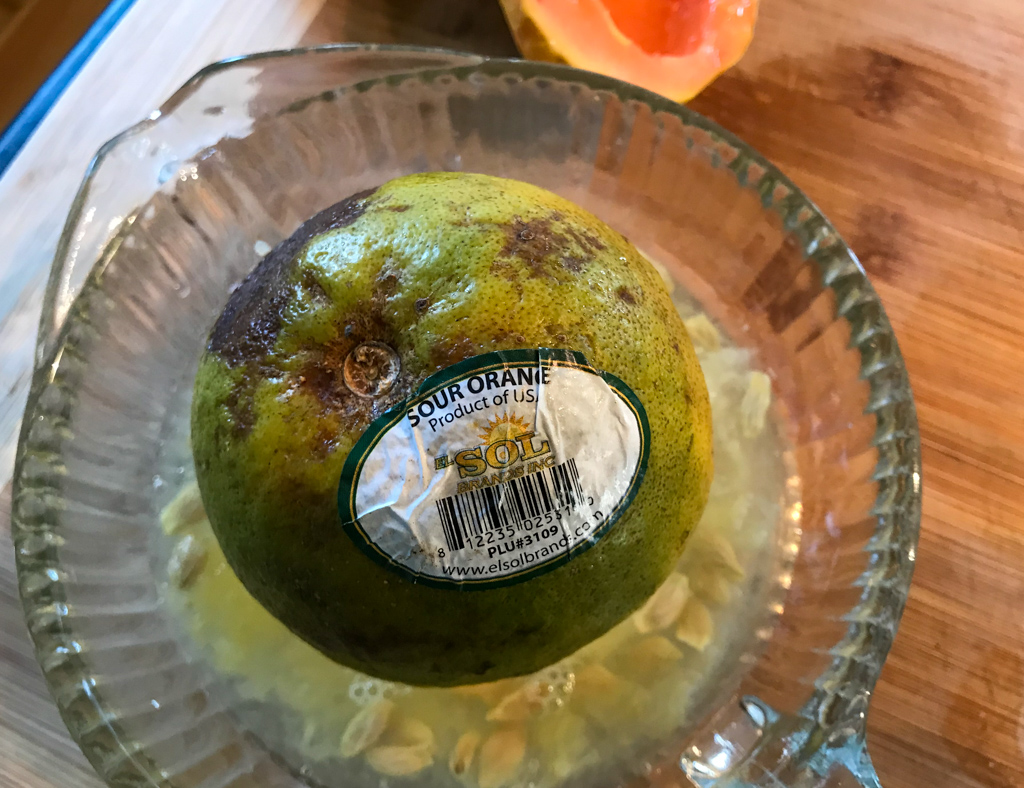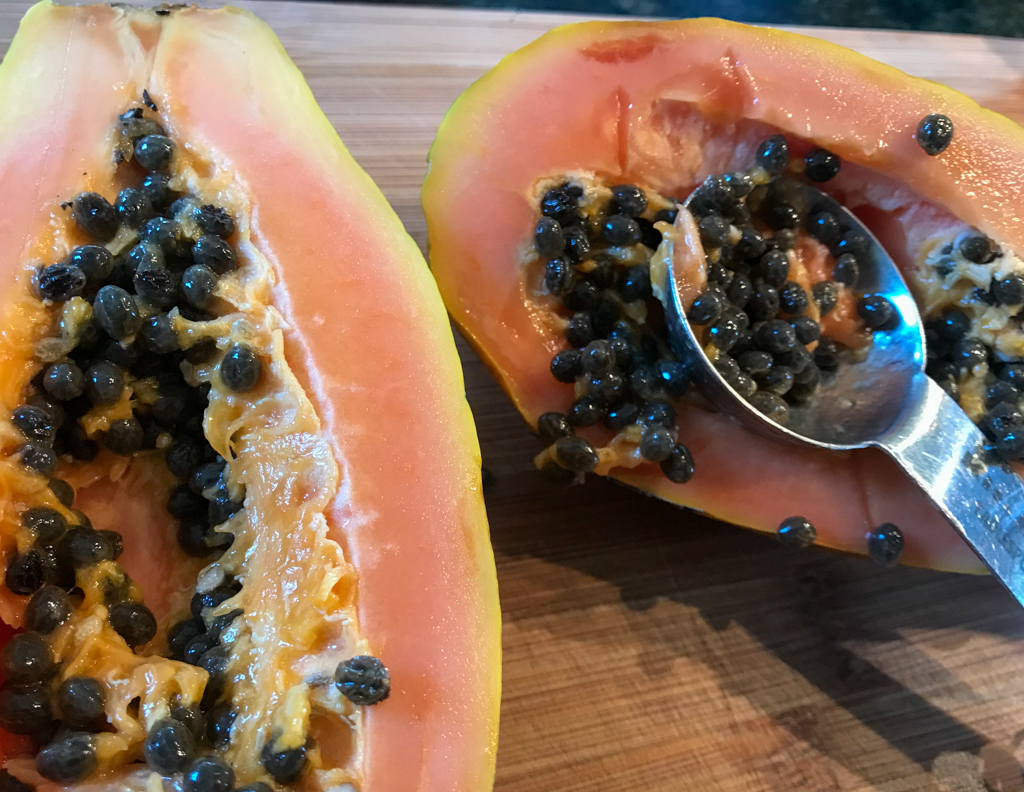
If gluten-free is a rock, and dairy-free is a hard place, you can see where that puts us cooks.
“Sure. In Asia,” you might say, and you would be right. If you can avoid the dim sum, and care less about the bits of wheat they sneak into soy sauce, you could dine throughout Asia for weeks without spawning the reactions you fear. But Asian food is a vacation for me, and going there takes planning. And imagination.
For example: I like to buy regular or firm tofu, and squish it between tilted cutting boards, and let it drain until it’s meaty enough to where the slabs flex like muscles. I like this better than buying extra firm in the first place. But then, like as not, I’ll marinate it in herbs and olive oil, top it with shredded provolone, lash leftover pesto onto leftover sourdough and make a tofu panini.
Which is delicious, but a failure of imagination. A concession to the sandwich instinct, with its oozy comfort and grill marks.
When friends with dietary restrictions drop by I do try to rise to the challenge with hospitality and verve. But you can’t tell that to my achy breaky heart. It’s selfish, ungracious, and globalist. It wants a cuisine without borders, every day and at every meal. And as more and more dietary tariffs have gone up among my family and friends, I’ve felt the anxious chagrin of a Scot contemplating Brexit. Who wants cultural isolation when your national dish is haggis? Or chopped liver.
What pulled me off of my own smug perch was that my daughter succumbed. On the advice of someone who wasn’t me she went gluten and dairy free, and felt better. I went from callous to semi-convinced in a paternal heartbeat. It helped that she looked amazing. Whatever it was she wasn’t eating, it was working.
“I do a lot of Thai and Chinese,” she told me, as we made a green curry sauce that she promised would be quick and simple. It wasn’t, quite – it involved fourteen ingredients, lemongrass and a blender – but it was delicious, burstingly fresh, and unassailable from a health perspective. I think we added tofu and bits of leftover roasted eggplant, and served it over jasmine rice. Topped with fresh coriander and streaks of hot sauce, it had an aroma as colorful and enveloping as a silk bathrobe.
Of course, as soon as she left, I knew I would want the food equivalent of flannel. And nothing says nappy plaid like polenta, aka grits, aka cornmeal mush. But what is cornmeal without its slippery soul of butter? And please don’t start in about Earth Balance, or Just Like Mature Cheddar Slices. The very names imply compromise. The point is to eat something that’s totally itself. And nothing is more completely itself than a cow.
Or maybe a coconut?
Among the other new things that tumbled in the pantry backwash of my daughter’s visit was unrefined coconut oil and gluten-free pasta. The pasta was edible, if you can forget that you’ve ever had real pasta, but the coconut oil was realer than real. It looked like a jar of cosmetics, and smelled so strongly of coconut it was almost musky. There was nothing at all sweet about it; it was like sniffing the armpit of the Coconut God.
When you’ve been searching for something without knowing quite what it is and you finally meet, it feels like you’ve been found. I felt like unrefined coconut oil had discovered me at last. The flavorful, unctuous non-dairy fat I had never been able to imagine simply materialized on a pantry shelf and told me it wanted to be in polenta.
Extrapolating from that, I decided it also wanted some shrimp in a tropical, tomato-based sauce that would use up the sour oranges and papaya I had picked up in my last visit to Lawrence, MA, and that it also wanted to meet some of my friends, so we could all drink rum together.
So, OK. Coconut polenta. Clearly a good idea, gluten and dairy free, and very nice with the shrimp with papaya in sour orange sauce. It could have been a bit more sour, as no one asked what was in the sauce besides the papaya, but the coconut came through on bite one, and brought smiles. It thoroughly scented the polenta, which was its usual, comforting self; glistening and just a bit soupy until it cooled into tooth resistance.
And if I thought it was just a bit greasy it’s because, really, I wanted to add a little bit of butter.
Recipe: Coconut Polenta with Sour Orange Papaya Shrimp
Creamy cornmeal scented with unrefined coconut oil, topped with shrimp in a sour orange, tomato and papaya sauce.
-Full Post-

Add the polenta, hot water (tap temperature is fine), salt, and shredded coconut to a large saucepan and stir well. If you have any time at all, save yourself some stirring and let the polenta swell up on its own for up to half a day. When you and your cornmeal have had enough, bring to a simmer over medium high heat, stirring very frequently with a wooden spoon. Lower the heat, keep some hot water handy, and keep stirring every few minutes, scraping the bottom clean each time. You'll need to keep this up for a good half hour, but allow yourself an hour before you really need it. Add water as needed to keep a loose mashed-potato consistency, and keep lowering the heat, keeping the pot mostly covered.

Peel the shrimp. Slice the papaya in half, cube the flesh, and remove and reserve 2 T of the seeds. In a mortar or spice grinder, coarsely grind the seeds (they have a mild, pepper-like pungency) and reserve. Juice the sour oranges, discarding the seeds - you should have about 1/3 cup. In a large frying pan or shallow casserole, melt the butter and olive oil together and sauté the onions and pepper over medium heat until softened but not browned. Add the ground papaya seeds and achiote powder and cook a few more minutes, to deepen the color and raise the aroma. Add the sour orange juice, salt, brown sugar, canned tomatoes, tomato paste and about half of the cubed papaya. Cook for about 15 minutes to soften the tomatoes, then mash to the lumpy side of smooth. Reserve and keep warm while the polenta cooks - or make up to a day ahead and refrigerate until needed.

When the polenta is at least pleasantly grainy if not smooth, bring the sauce to a simmer and add the reserved papaya chunks and shrimp. Cook for a few minutes until the shrimp is just done. Meanwhile, stir the polenta well with the unrefined coconut oil and butter, if using. Swirl your golden, aromatic mush into ridges on plates, spoon out the shrimp, and garnish with additional shredded coconut, cilantro or parsley.

In a world full of crappy masochistic advice, trying to make polenta by drizzling it into boiling water while stirring frantically with a wooden spoon is right up there with peeling mushroom caps. You can let the stuff soak overnight in the fridge, according to no less a grits master than Sean Brock. And having now spouted off, I'm sure there is an Italian nonna somewhere that has mastered the drizzle move, and will tell me where to put that long, splintery wooden spoon.
Seriously, it takes a while to get polenta wisdom. Plus, the stuff varies. I look for coarse, very uniformly grained Italian brands that come in a bricklike package. Bob and his Red Mill do only an OK job in this instance. If you want the very best American version, you want the insanely traditionalist Anson Mills grits, which are expensive, flowery, and sweet, and perfect with shrimp.
Don't throw out papaya seeds. Look up Hawaiian salad dressings, and make one of those instead. They do ask for a lot of sugar. I just inspired myself to make up a buttermilk ranch papaya seed dressing for summer salads, unless you beat me to it.
Ingredients
Directions
Add the polenta, hot water (tap temperature is fine), salt, and shredded coconut to a large saucepan and stir well. If you have any time at all, save yourself some stirring and let the polenta swell up on its own for up to half a day. When you and your cornmeal have had enough, bring to a simmer over medium high heat, stirring very frequently with a wooden spoon. Lower the heat, keep some hot water handy, and keep stirring every few minutes, scraping the bottom clean each time. You'll need to keep this up for a good half hour, but allow yourself an hour before you really need it. Add water as needed to keep a loose mashed-potato consistency, and keep lowering the heat, keeping the pot mostly covered.

Peel the shrimp. Slice the papaya in half, cube the flesh, and remove and reserve 2 T of the seeds. In a mortar or spice grinder, coarsely grind the seeds (they have a mild, pepper-like pungency) and reserve. Juice the sour oranges, discarding the seeds - you should have about 1/3 cup. In a large frying pan or shallow casserole, melt the butter and olive oil together and sauté the onions and pepper over medium heat until softened but not browned. Add the ground papaya seeds and achiote powder and cook a few more minutes, to deepen the color and raise the aroma. Add the sour orange juice, salt, brown sugar, canned tomatoes, tomato paste and about half of the cubed papaya. Cook for about 15 minutes to soften the tomatoes, then mash to the lumpy side of smooth. Reserve and keep warm while the polenta cooks - or make up to a day ahead and refrigerate until needed.

When the polenta is at least pleasantly grainy if not smooth, bring the sauce to a simmer and add the reserved papaya chunks and shrimp. Cook for a few minutes until the shrimp is just done. Meanwhile, stir the polenta well with the unrefined coconut oil and butter, if using. Swirl your golden, aromatic mush into ridges on plates, spoon out the shrimp, and garnish with additional shredded coconut, cilantro or parsley.

In a world full of crappy masochistic advice, trying to make polenta by drizzling it into boiling water while stirring frantically with a wooden spoon is right up there with peeling mushroom caps. You can let the stuff soak overnight in the fridge, according to no less a grits master than Sean Brock. And having now spouted off, I'm sure there is an Italian nonna somewhere that has mastered the drizzle move, and will tell me where to put that long, splintery wooden spoon.
Seriously, it takes a while to get polenta wisdom. Plus, the stuff varies. I look for coarse, very uniformly grained Italian brands that come in a bricklike package. Bob and his Red Mill do only an OK job in this instance. If you want the very best American version, you want the insanely traditionalist Anson Mills grits, which are expensive, flowery, and sweet, and perfect with shrimp.
Don't throw out papaya seeds. Look up Hawaiian salad dressings, and make one of those instead. They do ask for a lot of sugar. I just inspired myself to make up a buttermilk ranch papaya seed dressing for summer salads, unless you beat me to it.
